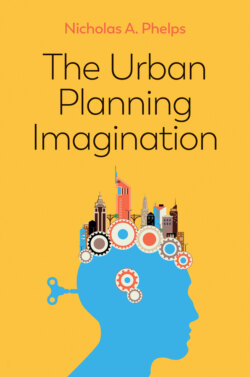Читать книгу The Urban Planning Imagination - Nicholas A. Phelps - Страница 34
Cities as nodes within networks
ОглавлениеThe contemporary urban planning imagination may recognize cities as less enmeshed in a hierarchical set of bounded places orchestrated by nation states than as present within the horizontal networks of connections between a vast number of cities and associated citizens, clubs or states. Plans are capable of expressing the character of the city as a network of nodes. This much is familiar in the topological maps of the metro systems of London, New York or Paris. These maps are also pieces of art though many of them can be illegible to all but the initiated.
This perspective interprets flows of money, commodities and people between cities as accumulated stocks – including investments made in the name of urban planning – which in turn promote inertia in a hierarchical network of world cities (Taylor et al., 2002: 2388). The key attributes of this system were outlined by Friedmann and Wolff (1982): (1) world cities articulate regional, national and international economies into a global economy and serve as the organizing nodes of the global economy; (2) elsewhere, major regions of the world are excluded from these cores and live instead in an economic periphery or semi-periphery; (3) world cities are large urbanized spaces of intense social and economic interaction; (4) the group of world cities is itself a hierarchical system of major cities – and they can be ranked; and (5) the elite of world cities increasingly constitute a transnational social class – a social class that is the product of global capitalism and that acts to ensure its survival.
Notwithstanding some of the silences of world-city analysis, which I return to in chapter 7, it is useful in drawing attention to questions of social polarization (Friedmann and Wolff, 1982: 322). Saskia Sassen (1991) later developed this line of thought, arguing that structural transformation towards service industries and the crowding-out of manufacturing in many global north world cities has seen the loss of skilled manual occupations (middle-income). These generalities have specific ramifications for urban planning and planners in world cities, where housing affordability and investment in schools, parks, transit, hospitals and the like are vital to reproducing the success of those same city economies.
The world-cities literature addresses itself almost exclusively to the economic rather than the political or planning networks of cities. Nevertheless, if ‘city powers … are mobilized through networks’ (Allen, 2010: 2898), then, by extension, the urban planning of cities might be said to be networked. City networks appear to have proliferated in number, diversity and depth, with implications for urban planning thought and practice that have barely been considered (Davidson et al., 2019). Despite the possibilities, there are obstacles to information pooling let alone collective action across networks of cities (Miao and Maclennan, 2019). The statutory planning efforts of local governments across the world rely on evidence bases that are now often produced by club actors. How, then, will policy experimentation in networks of cities shape the production and availability of alternative planning knowledge?
Networks of cities now encompass large parts of the urban population and mobilize significant resources. One quarter of global gross domestic product and 650 million people are accounted for by the C40 Cities Climate Leadership Group, for example, while US$100 million of funding was associated with the Rockefeller Foundation’s 100 Resilient Cities programme (Davidson et al., 2019). As diplomatic efforts (Lauermann, 2018), city networks have been an important means of lobbying national and supranational organizations for funding and promoting individual cities and their policy experience and expertise. The ‘Barcelona model’ emerged from the city’s celebrated regeneration efforts in hosting the 1992 Olympic Games, to such an extent that the city of Barcelona now participates in numerous city networks. City networks have been seen to have been important to environmental policy experimentation (Bulkely and Castan Broto, 2013), as I discuss in chapters 3 and 7. The UN’s Sustainable Development Goals have helped replace perceptions of the city as a source and container of defined ‘urban problems’ with perceptions of the city ‘as a hub, driver and node through which all sorts of global challenges can be addressed in practicable ways’ (Barnett and Parnell, 2018: 33).
